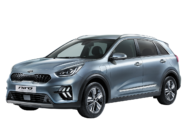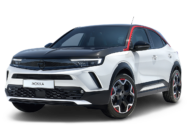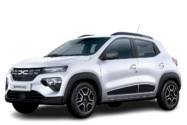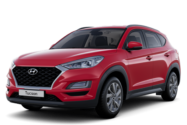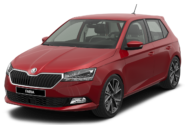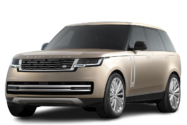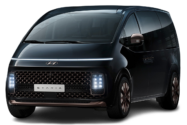18th January 2024
Green NCAP announces Category Winners for 2023
Today, Green NCAP releases its Category Winners of 2023 so consumers can make an environmentally conscious choice in the segment that best suits their personal needs. The ORA Funky Cat or soon to be named GWM ORA 03 made a noteworthy impression scoring top marks in the Small Family Car and Full Electric Car categories.
In achieving five-star ratings, all Green NCAP’s top performers are electric. However, in awarding Category Winners for 2023, Green NCAP has included categories for Diesel and Petrol to recognise carmakers that are committed to introducing cleaner and more efficient engine designs. It should be noted that the definition of the Category Winners is not based on Life Cycle Assessment (LCA) but on the measurement results of a vehicle’s tailpipe pollutant emissions, the fuel or energy consumption it needs to drive, and the sum of direct greenhouse gas output and the emissions related to the production and supply of the fuel/energy.
Industry has now understood that the new Euro 7 regulation will not lead to the huge step forward in emissions control as originally foreseen, which leaves the market open to competition. The responsibility for cleaner air might just lie more on the shoulders of industry rather than on regulators. We hope these Category Winners give guidance on which brands are making progress in a sustainable direction.
Dr. Aleksandar Damyanov, Green NCAP Technical Manager
To define the Category Winner, a calculation is made of the average value of the scores in each of the three indexes: Clean Air Index, Greenhouse Gas Index, and Energy Efficiency Index. The Average Score is given in percentage and is used as the basis for comparison of the vehicles, where the vehicle with the highest Average Score is the Category Winner.
The first-ever Category Winners are:
Full Electric Car Category and Small Family Car Category: ORA Funky Cat
In Green NCAP’s tests, Great Wall Motor’s small family car demonstrated good efficiency under a variety of conditions and made use of its aerodynamic design and high charging efficiency, helping improve its overall consumption and reducing costs for the consumers.
Diesel Car Category: Opel/Vauxhall Mokka
The Mokka takes advantage of a well-tailored diesel powertrain and is convincing not only by its low fuel consumption values but also by scoring well in the Clean Air Index. It managed to minimise the output of pollutants, through a state-of-the-art exhaust aftertreatment system that remained robust and effective under most test conditions.
Petrol Car Category: Škoda Kamiq
The Škoda Kamiq proved to be a good allrounder, making reasonable use of the efficiency potential of a small, turbocharged petrol engine and adequate emissions management to keep pollutant emissions levels low.
Both the diesel Opel Mokka and the petrol Škoda Kamiq can be seen as a reference for good-performing conventional fossil fuel vehicles.
Executive Car Category: Tesla Model S
The Tesla Model S impresses not only in its cutting-edge technology features but also in its attention to energy efficiency, performance, and driving range. Regardless of its size and mass, the Model S sets an example in the segment of pure electric luxury cars.
Small MPV Category: Renault Kangoo
The Kangoo E-Tech offers enhanced transport capabilities for goods and targets small and medium businesses. With its relatively small battery (45 kWh), the car is meant to be used mainly on shorter distances, but this usage case very clearly highlights all the everyday advantages of the fully electric powertrain, provided that the vehicle can be charged as required by the user.
Small SUV Category: VW ID.5
Even though it weighs more than 2,100 kg due to its big battery, the ID.5 demonstrated impressive efficiency performance. The recorded consumption values were among the lowest measured by Green NCAP so far and allowed this EV to win first place in its Small SUV category.
Editor's Note
For media information, please contact Cordelia Wilson, Senior Communication Consultant, at media@greenncap.com
Follow and Share
About Green NCAP
Green NCAP uses a broad range of tests to address the flaws in approval tests and, through consumer information, rewards those manufacturers whose vehicles go beyond the minimum requirements and offer excellent, robust, real-world performance.
We believe that consumers need to be adequately informed about the energy consumption and related greenhouse gas emissions of the vehicle of their choice.

